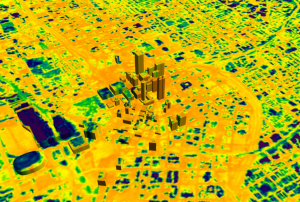After a few weeks’ hiatus, here is the latest question from the Georgia Climate Project. This week’s question is on how urban areas are affecting local weather and climate. You probably have already heard of the urban heat island and how it makes cities warmer, but you might not know that cities also increase rainfall downwind due to a combination of more aerosols for raindrops to form on and more convection due to the heat from all the pavement and buildings. Scientists need to know more about these and other impacts of urban areas and how they might change in a warmer climate. Remember, you can read all the Roadmap questions at https://roadmap.georgiaclimateproject.org/.
6. How do urban landscapes directly affect local-to-regional weather and climate processes?
Why this question is important: Anthropogenic climate change is often narrowly framed in terms of greenhouse gas (GHG) emissions warming the planet. However, the National Academies of Sciences, Engineering, and Medicine (2016) recently laid out the various ways that urban landscapes further change weather and climate processes. While urban heat islands and pollution are the most familiar, other pathways also exist, such as the development of storms, flooding, and changes to carbon and nitrogen cycles (Seto and Shepherd 2009; McLeod et al. 2017). As Georgia becomes increasingly urbanized, urban-weather-climate interactions will increase levels of stress on ecosystems, infrastructure, and society, implying the need for new thinking in urban planning, policy, management, and design.
